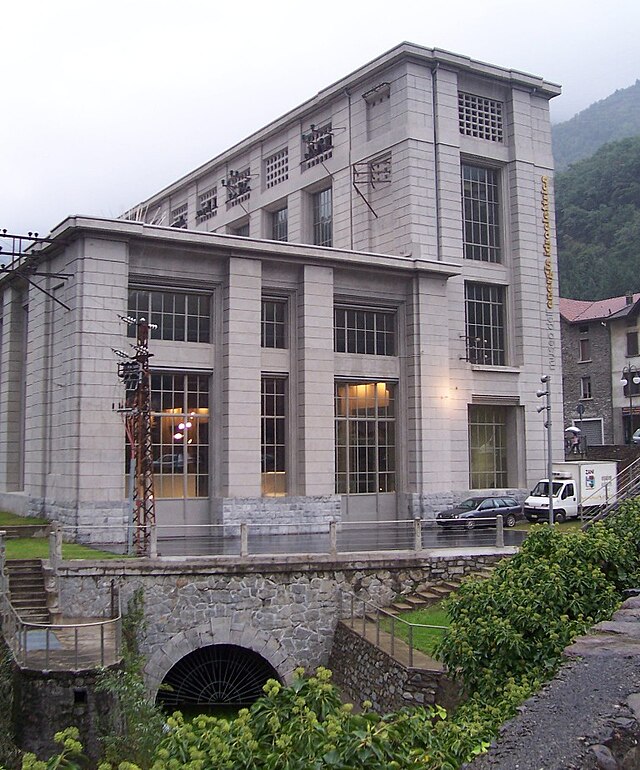Loading AI tools
Overview of hydroelectricity in Italy From Wikipedia, the free encyclopedia
Italy is the world's 14th largest producer of hydroelectric power, with a total of 50,582 GWh produced in 2010.[1] Electric energy from hydro accounted for about 18% of the national electricity production in 2010.[2]

There were a total of 2,729 active plants in 2010, of which 302 had a capacity greater than 10 MW.[3]: 54–55 Hydroelectric plants are especially widespread in the north, where there are many rivers and mountains. Lombardy, Piedmont and Trentino-Alto Adige contributed for almost 60% of the total energy production in 2010.[3]: 62
Hydroelectricity played a major role in the development of energy sector in Italy, since until the 1950s almost all the electric energy produced in the country came from this source. In fact, almost all the current capacity was installed in the first half of the twentieth century.[2]
Plants in Italy are also used to store excess energy from other sources during off-peak periods.

Since the Italian peninsula is relatively recent geological formation, it lacks commercial coal deposits and oil, so hydroelectricity was the first source widely used in Italy to produce electric energy,[4] and remained the main source at least until the 1960s. For example, of the total 15.5 TWh produced in 1938 hydro accounted for 14.6, or 94%. Hydroelectric energy played a main role in the Italian industrialization since late 19th century.[5] Hydroelectricity contributed for about 87.5% of the total energy produced from 1900 to 1960.[2]
Since the 1960s the share of hydroelectricity decreased constantly due to the increase in energy needs and almost unchanged total capacity. By 1980, share of hydro was already below 25%. The majority of energy was at that time produced by fossil fuels. For comparison, energy consumed in Italy in 2010 was about 20 times that of 1938.[2]
Italian hydroelectric potential is estimated to be exploited at 90%. This explain the almost unchanged total capacity in last 50 years. All the favorable places have already been taken: this poses a limit on the construction of new plants of relevant capacity in terms of technical, economical and environmental problems.[5]


| Company | Plant | Capacity (MW) |
Place | Province | Type |
|---|---|---|---|---|---|
| Enel | Entracque | 1,317 | Entracque | CN | Pumped-storage |
| Enel | Roncovalgrande[6] | 1,016 | Maccagno | VA | Pumped-storage |
| Enel | Domenico Cimarosa (Presenzano) | 1,000 | Presenzano | CE | Pumped-storage |
| Enel | Centrale di Edolo | 1,000 | Edolo | BS | Pumped-storage |
| Enel | Centrale idroelettrica di San Fiorano | 568 | Sellero | BS | Conventional+Pumped-storage |
| Endesa Italia | Centrale di Galleto | 530 | Terni | TR | |
| Enel | Centrale idroelettrica di San Giacomo | 448 | Fano Adriano | TE | Conventional+Pumped-storage |
| A2A | Centrale idroelettrica di Grosio | 428 | Grosio | SO | Conventional |
| Edipower | Nucleo di Mese - C.le Mese | 377 | Mese | SO | |
| Edipower | Nucleo di Udine - C.le di Somplago | 309 | Cavazzo Carnico | UD | |
| A2A | Centrale idroelettrica di Premadio | 245 | Premadio | SO |
Seamless Wikipedia browsing. On steroids.
Every time you click a link to Wikipedia, Wiktionary or Wikiquote in your browser's search results, it will show the modern Wikiwand interface.
Wikiwand extension is a five stars, simple, with minimum permission required to keep your browsing private, safe and transparent.